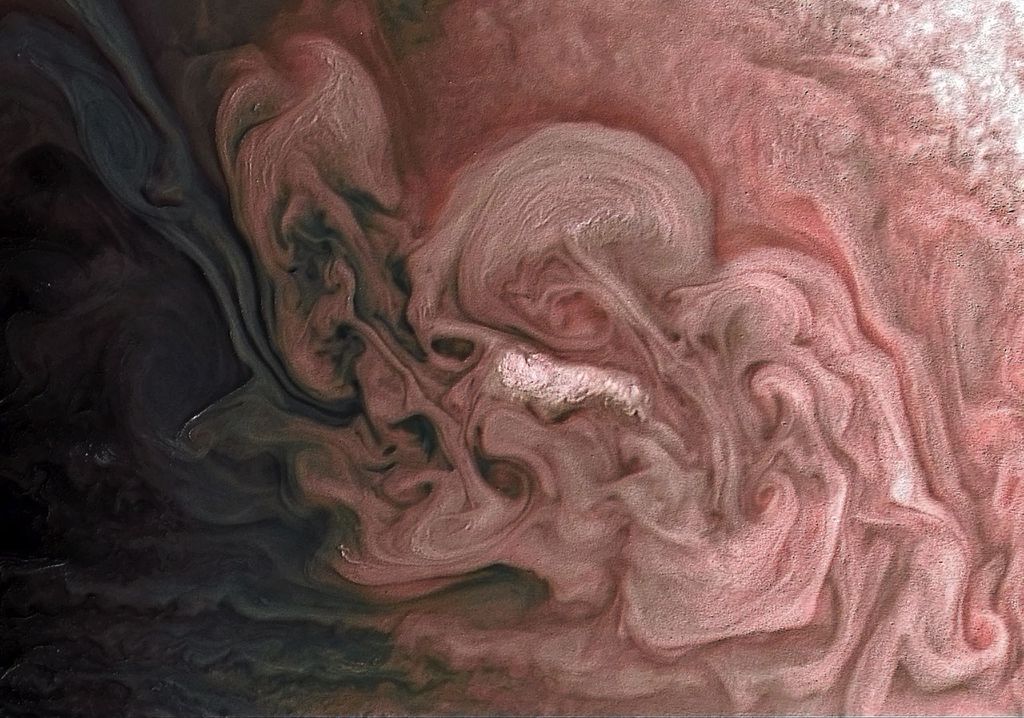1 min read
Anatomy of a Black Hole’s Surroundings Revealed: Major Study Includes Observations with NASA’s Hubble Space Telescope

A fleet of spacecraft including NASA's Hubble Space Telescope has uncovered unprecedented details in the surroundings of a supermassive black hole. Observations reveal huge bullets of gas being driven away from the gravitational monster and a corona of very hot gas hovering above the disk of matter that is falling into the black hole.
A team led by Jelle Kaastra of SRON Netherlands Institute for Space Research made use of data from ESA's XMM-Newton and INTEGRAL spacecraft (which study X-rays and gamma rays, respectively), the Hubble Space Telescope (for ultraviolet observations with the COS instrument), and NASA's Chandra (X-ray) Observatory and Swift (gamma-ray) satellites.
The black hole that the team chose to study lies at the heart of the galaxy Markarian 509 (Mrk 509), 500 million light-years away. This black hole is colossal, containing 300 million times the mass of the Sun, and is growing more massive every day as it continues to feed on surrounding matter, which glows brightly as it forms a rotating disk around the black hole. Mrk 509 was chosen because it is known to vary in brightness, which indicates that the flow of matter is turbulent.
This image of Mrk 509 was taken in April 2007 with Hubble's Wide Field Planetary Camera 2. But using a large number of telescopes that are sensitive to different wavelengths of light gave astronomers unprecedented coverage running from the infrared, through the visible, ultraviolet, X-rays, and into the gamma-ray band.
The study is presented in a series of seven papers in the journal Astronomy and Astrophysics, with more expected to be published in coming months.
A full account of the research can be read on the SRON website at http://www.sron.nl .
About the Object
- R.A. PositionR.A. PositionRight ascension – analogous to longitude – is one component of an object's position.20h 44m 9.73s
- Dec. PositionDec. PositionDeclination – analogous to latitude – is one component of an object's position.-10° 43' 24.53"
- ConstellationConstellationOne of 88 recognized regions of the celestial sphere in which the object appears.Aquarius
- DistanceDistanceThe physical distance from Earth to the astronomical object. Distances within our solar system are usually measured in Astronomical Units (AU). Distances between stars are usually measured in light-years. Interstellar distances can also be measured in parsecs.About 460 million light-years or 140 million parsecs
About the Data
- Data DescriptionData DescriptionProposal: A description of the observations, their scientific justification, and the links to the data available in the science archive.
Science Team: The astronomers who planned the observations and analyzed the data. "PI" refers to the Principal Investigator.The WFPC2 image was created from HST data from proposal 10833: B. Peterson (Ohio State University), M. Bentz (Georgia State University), R. Pogge (Ohio State University), and M. Vestergaard (University of Copenhagen, Niels Bohr Institute). The COS observations were from the HST proposal 12022: J. Kaastra (SRON Netherlands Institute for Space Research) et al. The science paper lead is G. Kriss (STScI). - InstrumentInstrumentThe science instrument used to produce the data.HST>WFPC2 and COS
- Exposure DatesExposure DatesThe date(s) that the telescope made its observations and the total exposure time.April 1, 2007, Exposure Time: 24 minutes (WFPC2), and December 10-11, 2009, Exposure Time: 7.2 hours (COS)
- FiltersFiltersThe camera filters that were used in the science observations.WFPC2: F547M (Strömgren y) COS Grisms: G130M, G185M
- Object NameObject NameA name or catalog number that astronomers use to identify an astronomical object.Markarian 509, Mrk 509
- Object DescriptionObject DescriptionThe type of astronomical object.Seyfert Galaxy
- Release DateSeptember 29, 2011
- Science ReleaseSpace Telescopes Reveal Secrets of Turbulent Black Hole
- Credit

This image was originally black and white and recorded only overall brightness. These brightness values were translated into a range of bluish hues. Such color "maps" can be useful in helping to distinguish subtly varying brightness in an image.
Share
Details
Claire Andreoli
NASA’s Goddard Space Flight Center
Greenbelt, Maryland
claire.andreoli@nasa.gov































